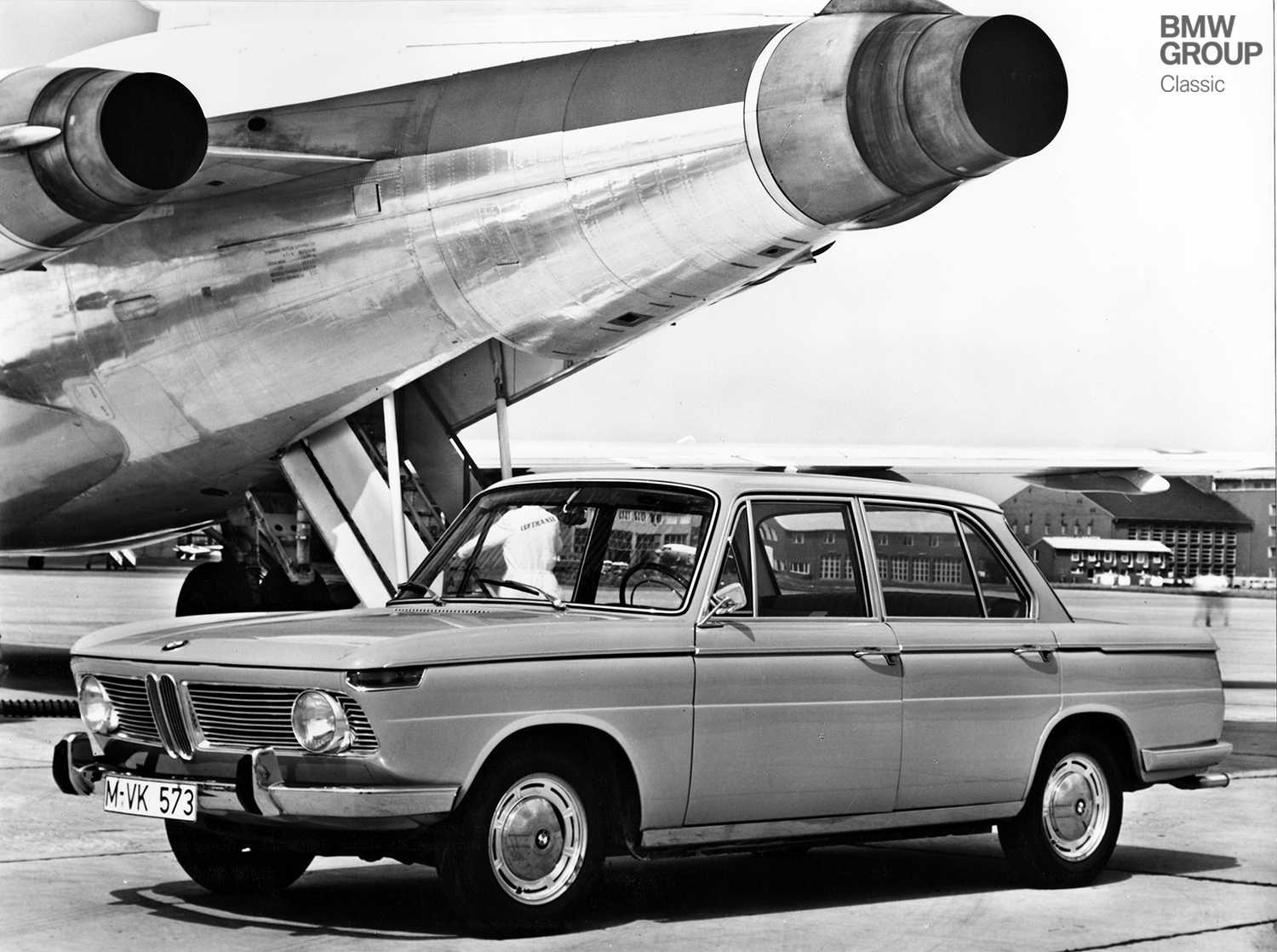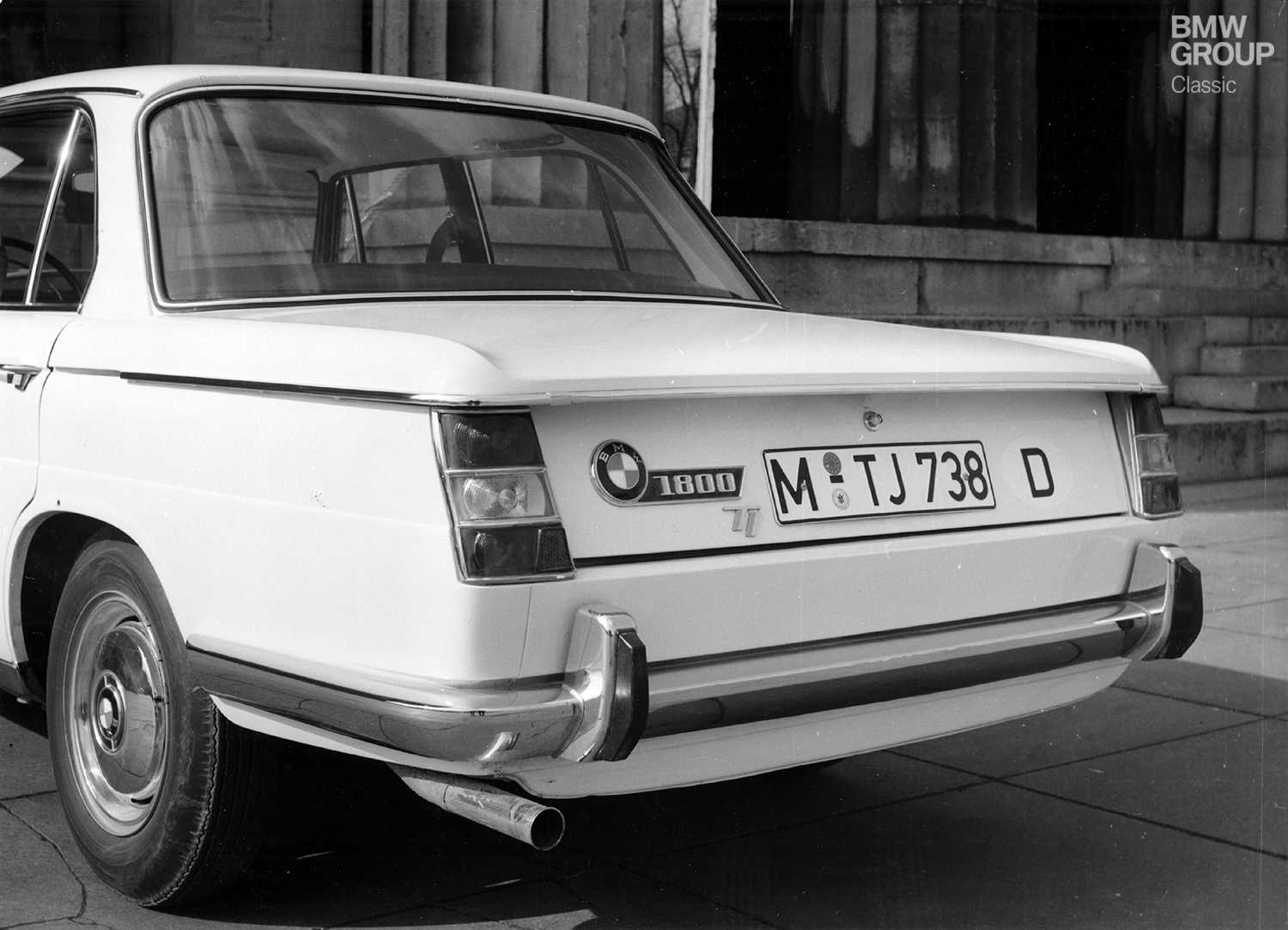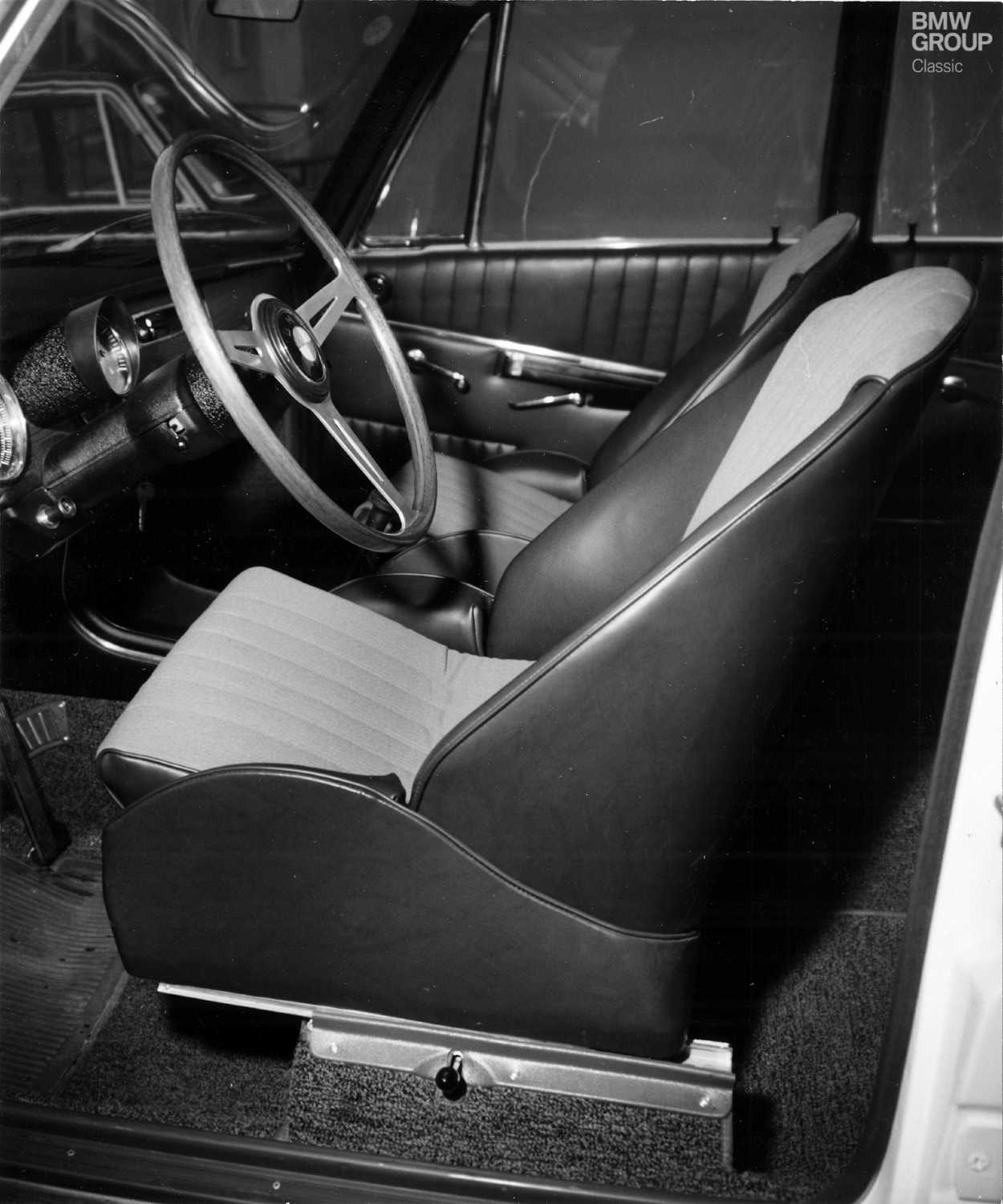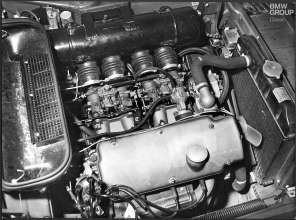The BMW 1800 was a car many people had been waiting a long time to see. Unveiled at the 1961 Frankfurt Motor Show badged as the BMW 1500 and sold from 1962, it really got going in 1963 as the BMW 1800. Here, at last, was the long-awaited quick and spacious saloon for all the family. Two letters on the rear added a healthy extra dose of spice to the mix. In TI guise it turned into quite the sports car – one with a neat side-line in winning races and rallies. The Neue Klasse range of models filled a gap in the market and allowed BMW to draw a line under some troubled times.
A dirt-coated BMW catches the last glimmers of light as a damp, rainy day draws to a close. The beams from the car’s headlights reflect back from the puddles and gathering mist. Safely home, the driver climbs out and plucks his helmet and freshly won trophy from the boot. He smiles a satisfied smile; this has been his kind of day. Tomorrow, he’ll give the car he was racing not 24 hours earlier a good wash and drive it to work as usual. In his shirt and tie. He can do all of this because his car is a BMW 1800 TI.
For roads and racing.
Back in the mid-1960s this was the somewhat dramatic (yet perfectly realistic) imagery used by BMW to promote the headline act of a new range, the 1800 TI taking to the stage in 1963 alongside the less powerful 1800. Customers welcomed the arrival of a spacious mid-size saloon which also happened to be rather good at winning races and rallies, setting records and generally showing others a clean pair of heels. Dual Solex side-draft carburettors ensured even more efficient fuel flow into the four cylinders and the engine’s maximum output of 110 hp arrived at 5,800 rpm. Top speed was 175 km/h (109 mph) and 0 to 100 km/h (62 mph) took roughly 11 seconds. Germany was populated by around 10.5 million motorised vehicles at the time (as per 1 July 1963) – of which 6.8 million were passenger cars, many small models producing barely 20 or 30 hp and saloons offering 45 – 60 hp. So such figures were a big deal. Only fully-fledged (and generally much more expensive) sports cars and luxury saloons had the edge over the 1800 TI. Indeed, many contemporaries with clear sporting pretentions struggled to keep pace.
New class, new era.
Two years earlier, in 1961, an all-new BMW had wasted no time in turning heads left, right and centre at the Frankfurt Motor Show. The 1500 was a sharply attired four-door saloon with an advanced, box-fresh four-cylinder engine promising a hearty 80 hp and a top speed nudging 150 km/h (93 mph). Journalists and public alike were thrilled, but it was to be another year before production got underway.
Things got really interesting in autumn 1963, when the new 1800 stamped its more harmonious, grown-up authority on proceedings. The 90 hp, 162 km/h (101 mph) 1800 was joined by a visually quasi-identical twin; only a single detail separated them to the eye – the “TI” on the boot lid. Those letters were to make history.
The road-tester’s dream.
As Reinhard Seiffert revealed in the 7-1964 issue of auto motor und sport, the German motoring magazine’s editors had been looking forward to getting their hands on an 1800 TI test car for some time – and were very sad to see it go again. All of which was understandable, given that this new BMW was capable of things keen drivers of the day dared not imagine. Here was space and comfort for the whole family, sprinkled with performance and roadholding formerly the preserve of thoroughbred sports cars.
TI/SA special edition produced in strictly limited numbers.
The BMW 1800 TI was soon making its mark in the rally world, and – needless to say – Monte Carlo was one of its primary ports of call. It was even more successful on the track, though, frequently dominating touring car events and winning the German championship in 1964. Hubert Hahne topped the time sheets at the Nürburgring, while the SA (for “Sport Ausführung” – or “sports version”) served up a full 130 hp and 0 – 100 km/h (62 mph) in just nine seconds. This special edition, limited to a 200-unit run, also offered a raft of other sporting extras, such as a more direct steering ratio, special seats and a bespoke steering wheel. Only holders of a racing licence could purchase the car, which is now a highly prized rarity.
Gasping for air.
BMW turned a new page in its life story with the Neue Klasse range. The company’s travails of the 1950s – and the crisis which, at its height, nearly heralded its demise – were now behind it. As the 60s dawned, BMW roared back into the fast lane, leaving rivals who had failed to spot this market niche gasping for air. In 1966 another new model range entered the fray, one which would likewise make history: a 1600 with just the two doors – a.k.a. 02.





